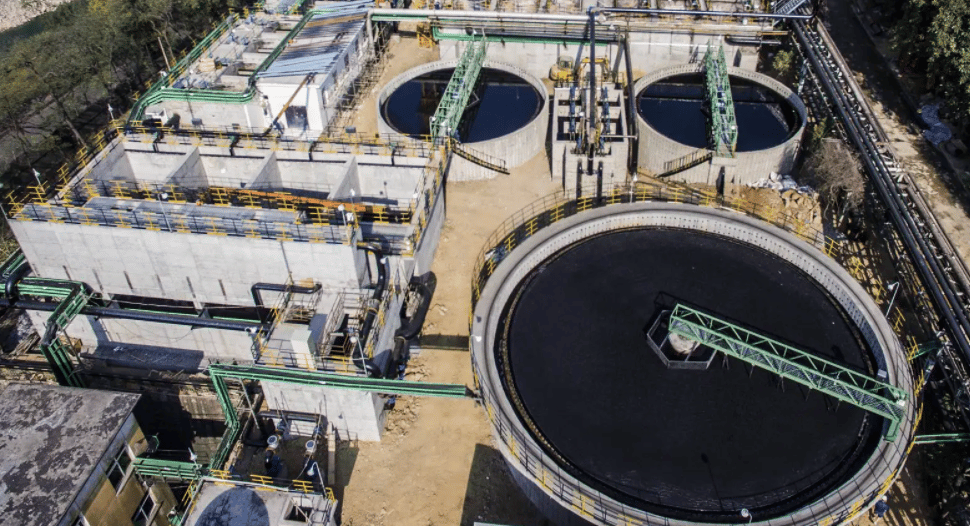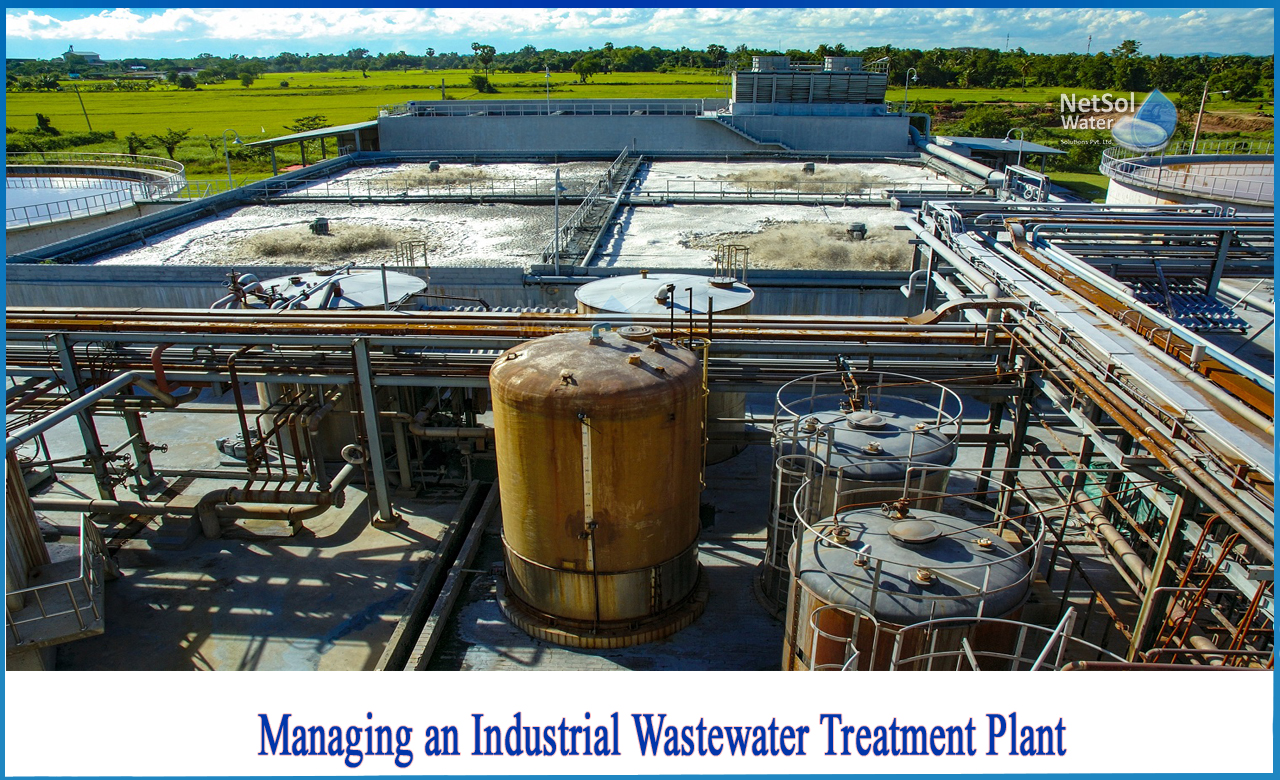Industrial Waste Water Treatment-- Eco-Friendly Solutions for Water Recycling
Industrial Waste Water Treatment-- Eco-Friendly Solutions for Water Recycling
Blog Article
Trick Methods in Industrial Waste Water Treatment Procedures
The therapy of industrial wastewater is an essential element of ecological management, involving a series of strategies designed to minimize the effect of pollutants. From the fundamental physical methods that separate solids to the sophisticated chemical and organic processes that target certain toxins, each method plays a vital function in accomplishing water quality criteria. Developments in modern technologies such as membrane filtering and progressed oxidation procedures provide cutting-edge solutions for boosting therapy efficiency. Comprehending just how these methods interconnect and their implications for sustainability increases essential concerns concerning the future of wastewater monitoring in industry.
Physical Treatment Methods
Exactly how properly can physical treatment approaches resolve the intricacies of commercial wastewater? Physical treatment methods play an essential function in the preliminary phases of wastewater management, focusing mainly on the removal of solids and huge particulates. Methods such as flotation, filtration, and sedimentation are important for minimizing the focus of put on hold solids, thereby boosting the effectiveness of succeeding treatment procedures.
Sedimentation involves the gravitational settling of solids, enabling for the separation of larger products from the wastewater. This technique is specifically reliable in clearing up water prior to biological or chemical treatments.
Furthermore, flotation approaches, which make use of air bubbles to lift suspended solids to the surface for elimination, are reliable in treating wastewater with high concentrations of fats, oils, and greases. Overall, physical treatment techniques act as an essential first step in the thorough management of industrial wastewater, making sure that the lots on subsequent therapy phases is lessened and boosting total therapy effectiveness.
Chemical Therapy Techniques
While physical treatment methods lay the groundwork for efficient wastewater management, chemical treatment techniques are necessary for attending to the extra complicated impurities often located in commercial effluents. These methods make use of different chemical agents to speed up, neutralize, or oxidize damaging materials, making sure an extra extensive removal of contaminants.
One usual strategy is coagulation and flocculation, where chemical coagulants such as aluminum sulfate or ferric chloride are included in promote the gathering of put on hold bits. This process boosts solid-liquid separation, decreasing turbidity and enhancing water quality. In addition, neutralization procedures are employed to adjust the pH of wastewater, making use of bases or acids to neutralize acidic or alkaline streams, respectively.
Oxidation-reduction reactions play an important duty in derogatory organic impurities and virus. Chemical oxidants like chlorine, ozone, or hydrogen peroxide are made use of to break down intricate organic compounds, making them less dangerous or extra naturally degradable. Progressed oxidation procedures (AOPs) combine several oxidation methods to improve toxin elimination effectiveness.
Biological Therapy Processes
The effectiveness of wastewater therapy is substantially boosted by organic treatment processes, which harness the natural metabolic activities of microbes to decompose raw material and get rid of toxins. Industrial Waste Water Treatment. These procedures mainly include cardio and anaerobic digestion, each customized for specific kinds of wastewater
Aerobic treatment processes make use of oxygen to sustain microbial growth, promoting the failure of natural pollutants right into co2 and water. navigate to these guys Common techniques include triggered sludge systems, where aeration tanks assist in the mixing of wastewater with bacteria, and trickling filters, which motivate biofilm growth on media surfaces.
On the other hand, anaerobic therapy processes happen in the absence of oxygen, utilizing anaerobic bacteria to disintegrate raw material, causing biogas production, an eco-friendly energy source. Anaerobic digesters are typically used in commercial settings for this function, properly reducing the volume of sludge while creating valuable biogas.
The selection of an organic treatment approach depends upon wastewater qualities, treatment goals, and regulatory requirements. The assimilation of biological processes in wastewater therapy not just boosts contaminant removal performance but additionally advertises sustainability by reducing chemical use and sustaining source healing.
Advanced Oxidation Processes

Usual AOP techniques consist of Fenton's photocatalysis, ozonation, and reagent. Fenton's reagent, a combination of hydrogen peroxide and ferrous iron, catalyzes the formation of hydroxyl radicals, making it efficient for treating wastewater containing phenolic compounds and other stubborn materials. Ozonation makes use of published here ozone as a powerful oxidant, qualified of weakening a wide variety of natural pollutants while all at once disinfecting the effluent. Photocatalysis employs light-activated stimulants, such as titanium dioxide, to enhance oxidation responses and eliminate contaminants.
AOPs use several advantages, consisting of decreased sludge manufacturing and the ability to treat wastewater with high concentrations of natural contaminants. However, the application of AOPs needs mindful consideration of functional criteria and cost-effectiveness, guaranteeing that these sophisticated methods are properly integrated right into existing wastewater therapy systems.
Membrane Filtration Technologies

Microfiltration works for eliminating suspended solids and bacteria, while ultrafiltration targets smaller sized natural particles and viruses. Nanofiltration bridges the void between ultrafiltration and turn around osmosis, effectively removing divalent ions and natural substances. Reverse osmosis gives the highest level of purification, used mainly for desalination and eliminating mono-valent ions.
Membrane innovations use many benefits, including low energy consumption compared to traditional therapy methods, modular design for scalability, and the potential for water recovery and reuse. Difficulties such as membrane fouling and the need for normal upkeep need next page to be dealt with to guarantee system efficacy. On the whole, membrane layer filtering innovations represent an essential part of contemporary industrial wastewater therapy approaches, promoting sustainability and resource preservation in water administration.
Conclusion
In conclusion, commercial wastewater treatment employs a varied range of techniques, consisting of physical, chemical, biological, and progressed techniques. Each method plays a vital duty in successfully dealing with numerous impurities, enhancing water top quality, and advertising resource sustainability. The integration of these strategies promotes an extensive therapy method, ensuring that commercial effluents meet governing requirements while minimizing ecological impact. Proceeded advancements in these methods will additionally improve the effectiveness and effectiveness of wastewater treatment procedures in industrial setups.
The therapy of industrial wastewater is an important aspect of environmental administration, entailing a range of techniques created to minimize the impact of contaminants.Exactly how properly can physical therapy methods deal with the intricacies of commercial wastewater?Advanced oxidation procedures (AOPs) stand for a cutting-edge method in industrial wastewater therapy, created to properly degrade organic pollutants that are frequently resistant to traditional treatment techniques (Industrial Waste Water Treatment).In final thought, commercial wastewater therapy utilizes a diverse variety of methods, including physical, chemical, biological, and advanced methods. Continued developments in these approaches will better boost the performance and effectiveness of wastewater therapy procedures in commercial setups
Report this page